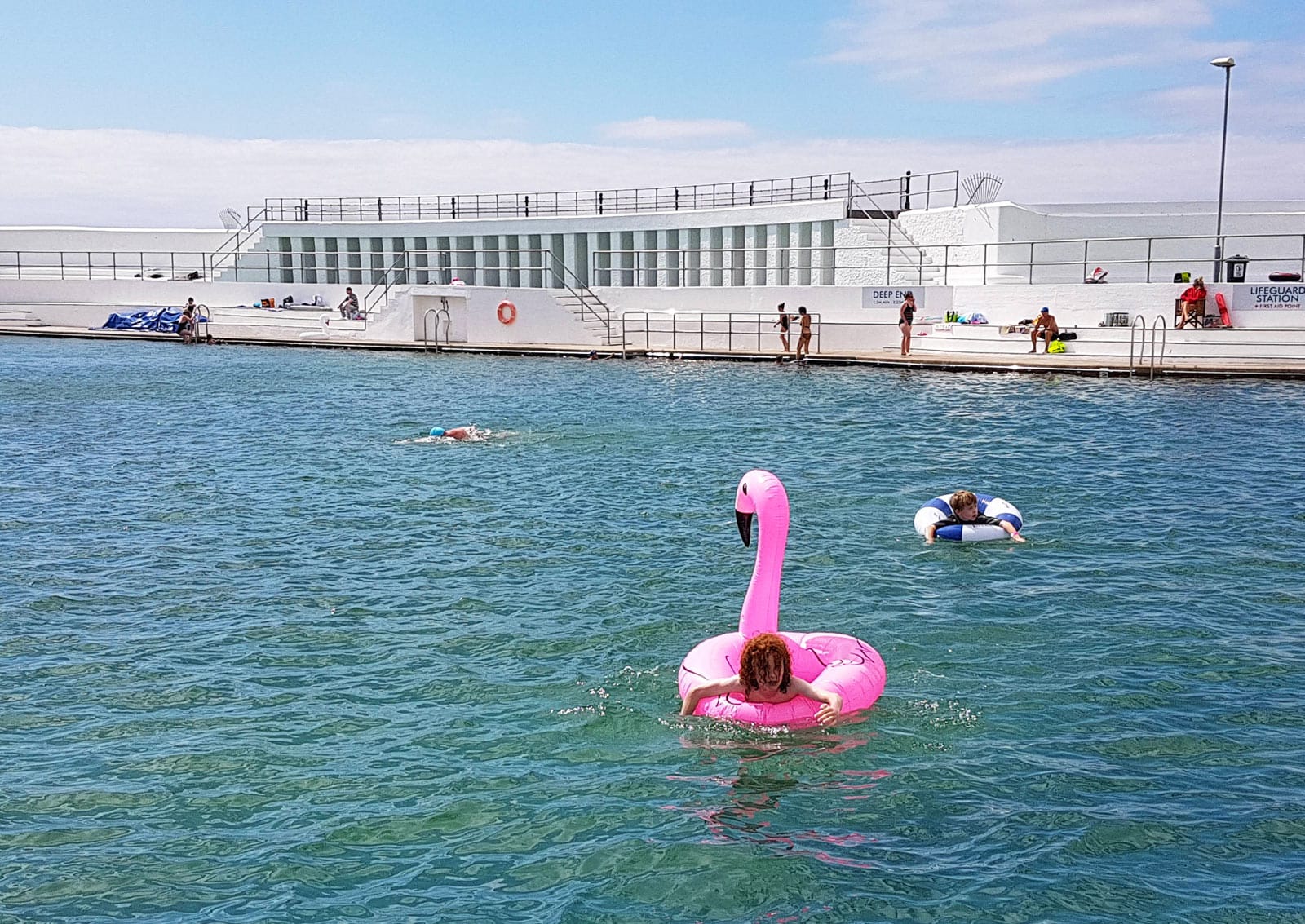
I’ve been thinking a lot about public spaces – and using them too. As a freelancer in London, I write from coffee shops, wander through museums and recently explored both in my work: a Substack post on cafés as “third places” and a research project on museums as youth-friendly spaces.
That curiosity took me to the Design Museum’s Splash! exhibition for a talk titled “On Social Architecture: Swimming Spaces and the City”. The panel – featuring architectural historian Kathryn Ferry, architect Chris Romer-Lee and Swim Dem Crew’s Peigh Asante – dived into the history of Britain’s public baths and lidos. Born out of 19th-century sanitation efforts, swimming pools later became emblems of civic pride, fitness and fun, especially in the 1930s.
They were also job creators during the Depression and stylishly designed in classicism. At their peak, the UK had 300 lidos – now, only about half are still making a splash.
Lidos began to decline in the 1960s and ’70s as affordable foreign holidays drew people away from British seaside towns, where many lidos were located. In response, there was a shift toward indoor, temperature-controlled leisure centres like Rhyl Sun Centre. But these indoor pools eventually lost appeal too, especially after 1980s privatisation led to widespread closures. Safety concerns, including the tragic 1973 Summerland fire on the Isle of Man that killed 50 people, also contributed to their decline.
In recent decades, there’s been a revival of public swimming spaces across the UK. London Fields Lido reopened in 2006 after 20 years of community campaigning, and Brighton’s Sea Lanes launched in 2023. Panellist Romer-Lee highlighted his work with Future Lidos and Swimmable Cities, promoting outdoor and urban swimming to make it more accessible. In SEED CLUB, Alice Jasmine Crippa discussed efforts to restore Milan’s modernist lidos, including the costly renovation of Piscina Argelati (for some amazing pics, see here).
This renewed interest in swimming ties into broader trends around wellness, fitness and the search for “third places” – spaces beyond home and work that foster community and presence. Swimming, especially, demands that we disconnect from our phones, offering a kind of mindfulness that land-based activities sometimes don’t.
Outdoor swimming, whether in lidos or natural bodies of water, is making a comeback, echoing the lido boom of the 1930s. This reflects a wider desire to reconnect with nature and escape artificial environments. The Splash! exhibition explores this shift, linking it to historical practices like thalassotherapy (healing through seawater). Today’s wellness culture has embraced similar ideas, from cold water immersion to forest bathing, now spilling over into swimming culture.
The exhibition also explores the spiritual significance of open water. One of my favourite images was of McIver’s Ladies Baths in Sydney. The site is believed to have held sacred significance for Aboriginal women of the Eora group as a place for birthing and swimming, before being taken over by European settlers in the 19th century. I was especially drawn to works exploring water’s meaning within the African diaspora, including a video inspired by the water deity Mami Wata and underwater portraits by Phoebe Boswell. These pieces reflected on water as a site of historical trauma – particularly through the lens of the Atlantic slave trade, but also as a space for rebirth and liberation.
Elsewhere, the exhibition highlighted modern efforts to expand outdoor swimming spaces, inspired by the principles of the “nature cure”. Floating pools lined the rivers of London and New York in the late 19th to mid 20th centuries. Urban swimming has become less accessible since then, but initiatives are being launched to re-introduce floating pools to these cities. Panelist Chris Romer-Lee was involved in the East London Baths proposal, for a community-run pool floating on top of the River Thames, and the +POOL project in New York City has proposed a water-filtering floating swimming project on the East River. In Norway, 20 floating docks have been installed in sea pools and fjords to make swimming more accessible for people with disabilities.
Outdoor sea pools are also being restored, such as in the UK with Tarlair Swimming Pool in Macduff, Scotland or Jubilee Pool in Penzance, Cornwall (the latter now being the UK’s first geothermally heated pool). These spaces are being recognised as a key part of historical heritage and being invested in as key landmarks and sources of local pride and history. The future of our public swimming spaces will be shaped by technological innovations that bring pools to our urban centres, shaping our urban landscapes around the increasing prioritisation of health and wellness.
The resurgence of public swimming has largely become a middle-class pursuit. Rising lido prices in the UK have made access more difficult, while wild swimming – popularised during the pandemic when pools closed – has also gained a middle-class reputation. Alongside the desire to connect with nature, there’s an appeal in choosing rugged, challenging exercise, especially for those with economic privilege, where discomfort becomes aspirational. The Splash! exhibition addresses this privilege, showing how, like other wellness trends, growing popularity brings luxury gear and exclusive spaces, underscoring the role of class in these swimming cultures.
Making public swimming spaces exclusive to a privileged few misses their real magic – as places for connection and community. As Swim Dem Crew co-founder Peigh Asante said at the Design Museum talk, swimming pools break down barriers because you’re more physically exposed than usual. That vulnerability helps people drop their public facades and connect authentically. Swim Dem Crew embraces this, calling itself “an inner-city swim club that believes in the power of community,” with sessions and advocacy focused on making swimming inclusive and social.
This mission is especially important for Black and Asian communities in the UK, where research from the Black Swimming Association shows they swim less regularly than white people. Sadly, Black children in the UK are 3.5 times more likely to drown than white children – a gap linked to cost, location, time barriers and harmful stereotypes like the racist myth that Black bodies aren’t “made” for swimming. Making swimming spaces accessible isn’t just about leisure; it can literally be life-saving.
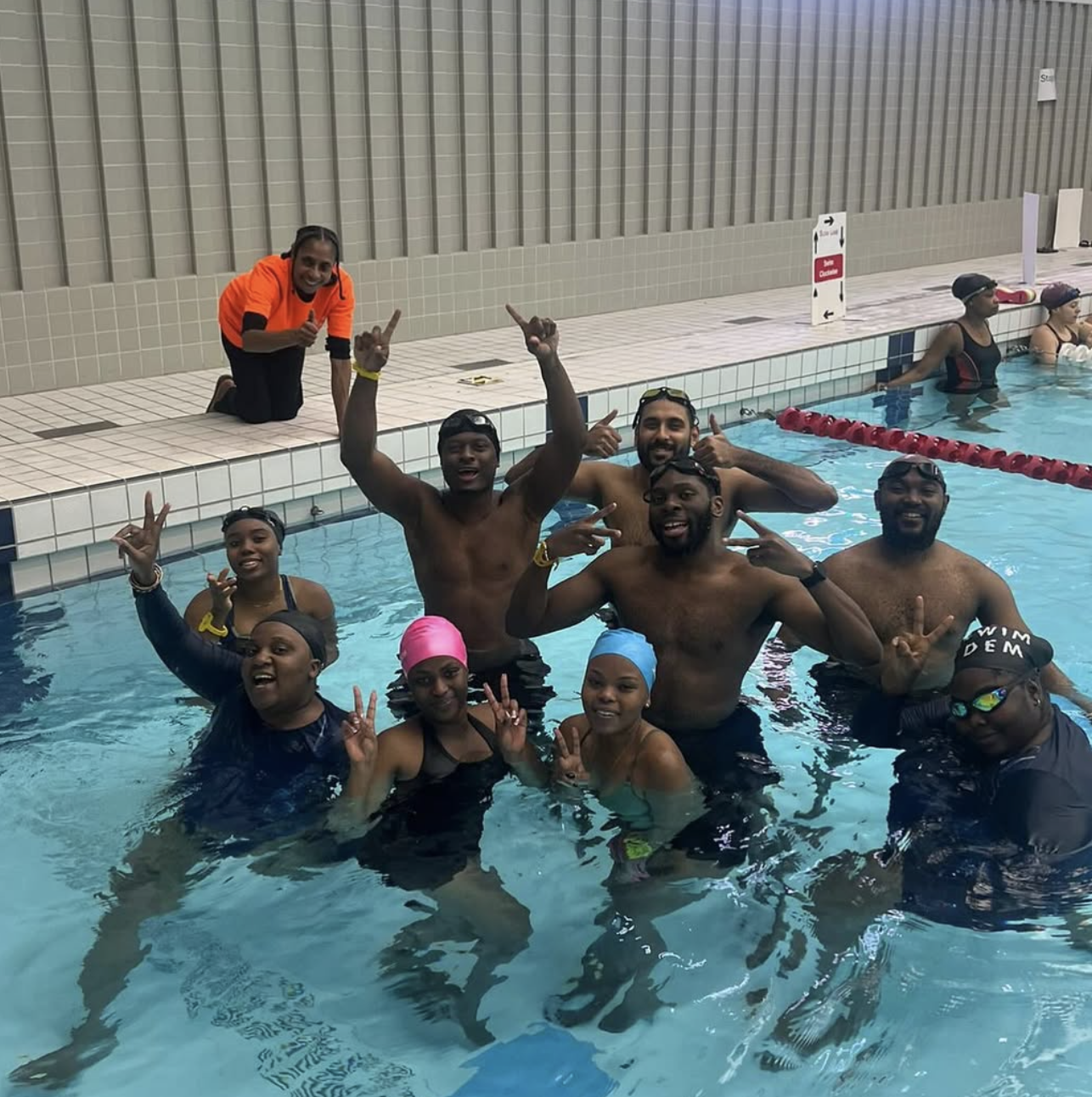
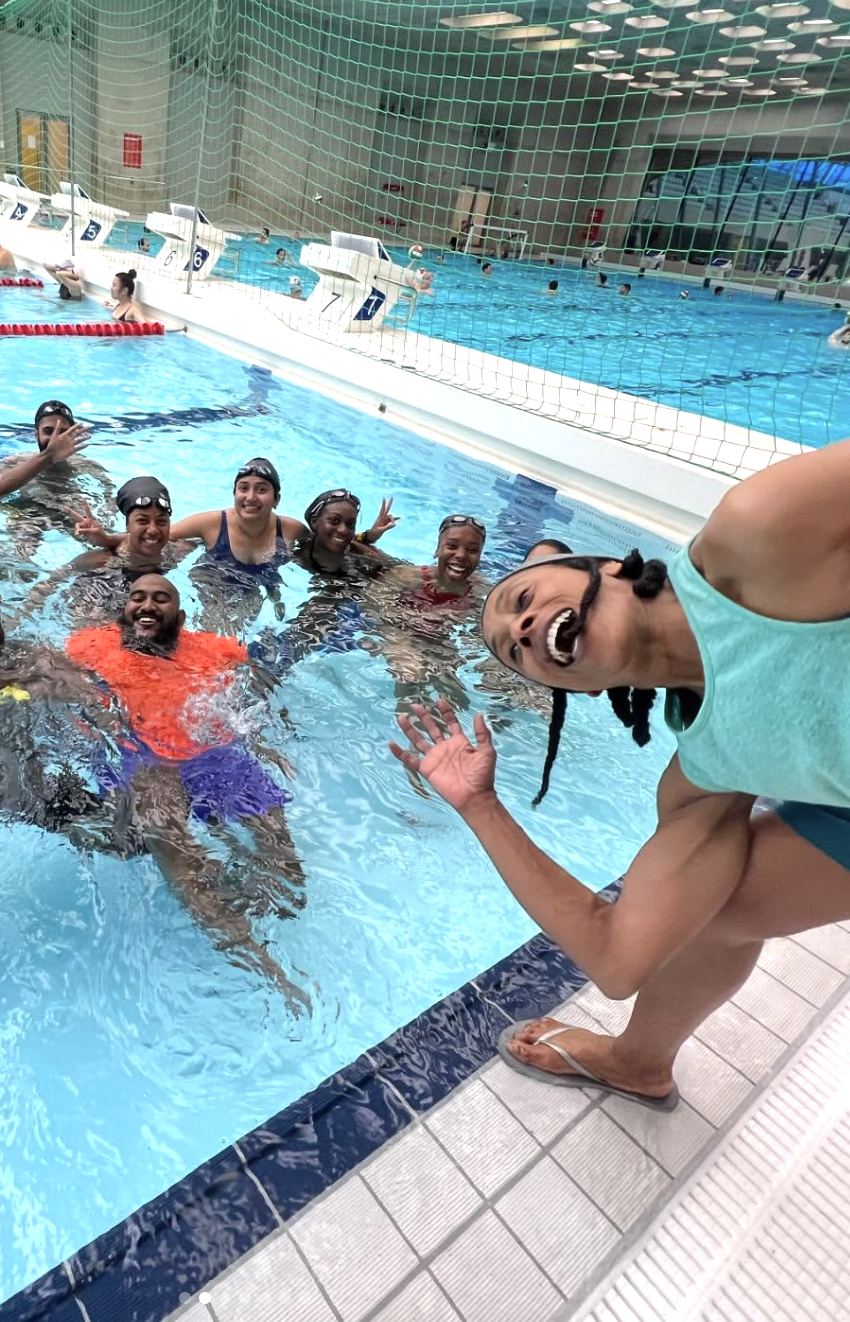
Charlie Robin Jones from SEED CLUB highlighted how marginalised groups create community in swimming spaces, like the Hampstead Ponds in north London. These gender-segregated—but trans-inclusive—ponds have long been spaces of freedom. The men’s pond, for example, served as a discreet cruising spot for queer men, while the secluded Kenwood Ladies’ Pond has become a symbol of liberation for women, celebrated in the 2019 book At The Pond. The separation reflects the politics of visibility that have shaped women’s bathing spaces over time.
It reminded me of a recent brand trip by beauty brand Space NK, who prioritised inclusion for Muslim influencers by giving them a private villa so they could swim and sunbathe in privacy and away from cameras. They were also given modest swimwear for more outward-facing events.
In a digital age where public places are constantly documented on social media, we’re likely to see more swimming spaces that prioritise privacy and seclusion as an antidote to excessive visibility. This might mean hidden natural swimming spots or dedicated time slots at public pools for different groups, recognising that accessibility isn’t just about openness but also about meeting people’s diverse needs in unfamiliar spaces.
Charlie also shared WET magazine, published from 1976 to 1981 in Santa Monica and known as WET: The Magazine for Gourmet Bathing. With its playful, campy style – like the acronym “Writhing Erotic Turmoil” – WET brought a colourful, erotic edge to swimming culture and helped shape postmodern aesthetics. It reminded me of the Splash! exhibition’s section on swimwear in 60s and 70s gay magazines, which celebrated the male form as a genre staple.
Creator Leonard Koren, known for his bathing photography and his book Undesigning the Bath (1998), argued that “good” design can sometimes spoil the bathing experience. He emphasised sensual, profound bathing and drew inspiration from global cultures, especially Japan.
Koren and WET got me thinking about the “gourmet” side of wellness today – finding sensuality and art in exercise, beyond the usual puritanical asceticism. Brands like Othership are already turning saunas and ice baths into social, nightclub-like experiences with mood lighting and music. Swimming could follow suit, with DJ-accompanied sessions, unique lighting, comfy changing rooms and post-swim drinks to elevate both pleasure and community.
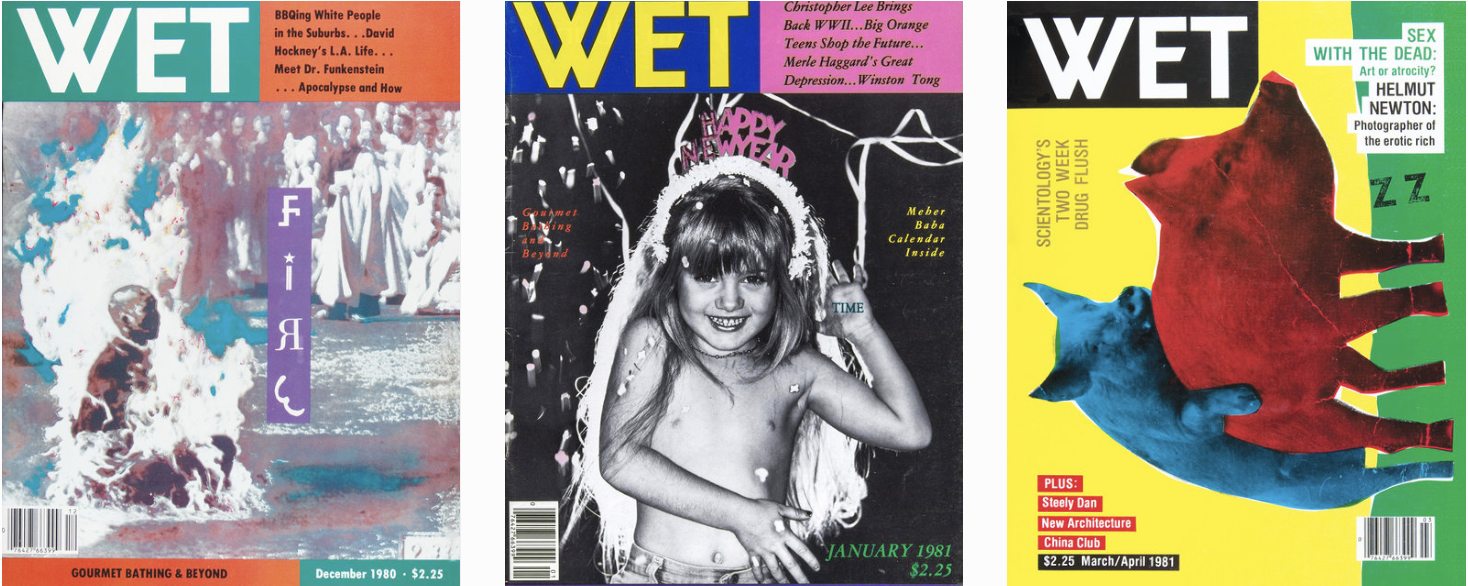
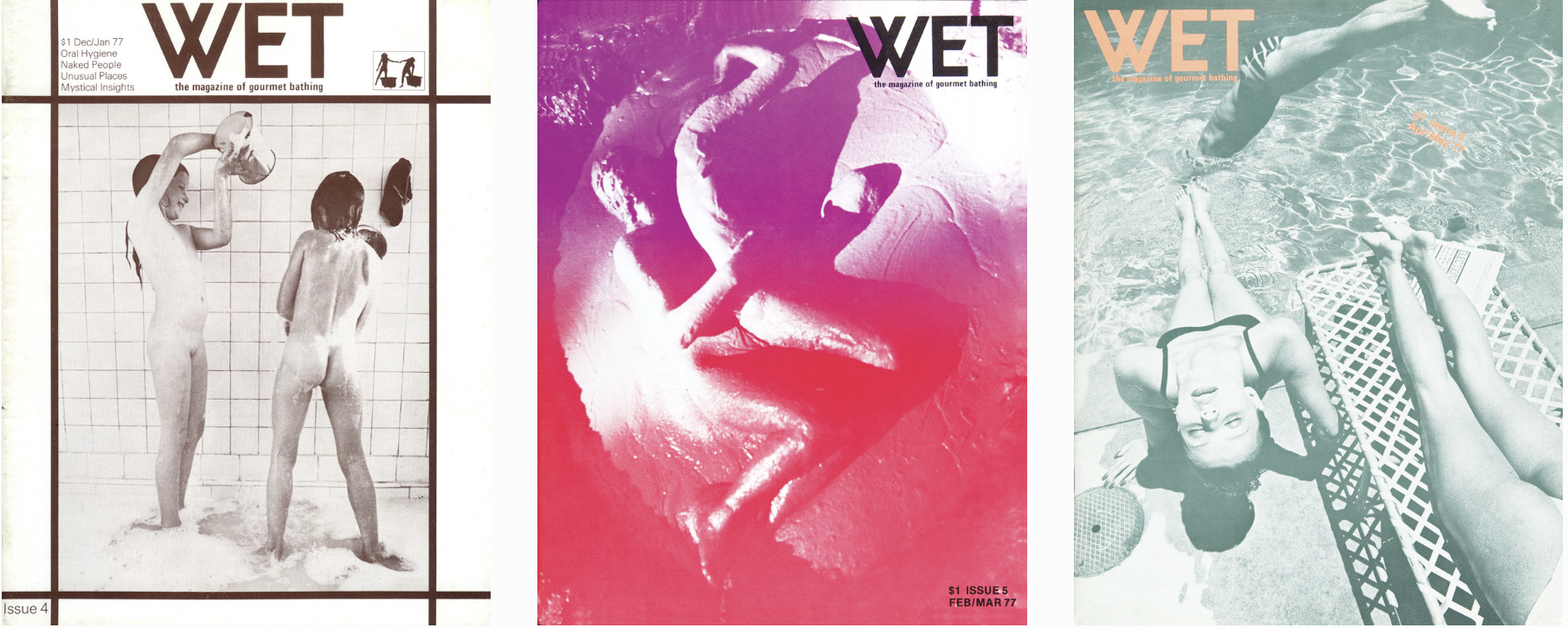
The changes in swimming – and where it happens – reflect bigger shifts in fitness culture, our bond with nature and how we use public spaces. We’re seeing a real push for more outdoor swimming spots and renewed investment in public pools and lidos. This stems from a growing need to reconnect with nature and find welcoming “third places” for gathering.
Today’s wellness craze drives people to seek the buzz around swimming’s health benefits – but these spaces offer much more: a mix of ruggedness and comfort, discipline and joy. Public swimming spots uniquely hold these tensions, creating spaces where health means different things to different people – a holistic experience everyone helps shape.
Swimming pools also spotlight how architecture can foster community when designed with social impact in mind. While once symbols of civic pride, modern swimming spaces now prize privacy and escapes from phone cameras. Balancing openness with seclusion, and blending indoor/outdoor designs or preserving classic 1930s features, helps these spaces stay grounded in their heritage and inspire swimmers.
At their best, public swimming spaces encourage presence and connection – body and mind, play and exercise. They promise democratic access to health and wellbeing, but only if they embrace diverse needs and true accessibility – a promise still missing from many public spaces today.
| SEED | #8332 |
|---|---|
| DATE | 03.07.25 |
| PLANTED BY | JADE ISAACS |


